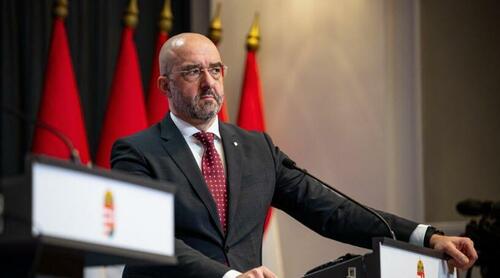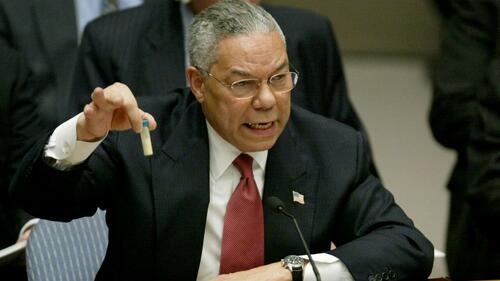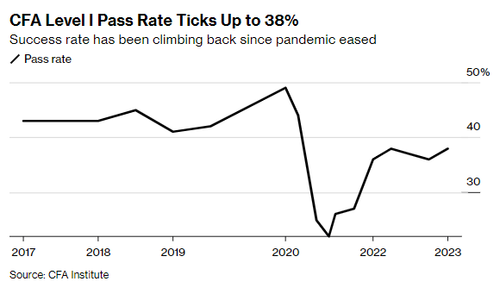Earlier this week, I wrote about Joan Biskupic’s first article on her new book. Her exclusives were barely there. Biskupic’s second article, however, breaks some news. Now, these reveals are a bit dated, but they do shed some light on the Chief Justice.
Let’s flash back to 2017 when two cases that concerned gay rights reached the Court’s docket. First, Masterpiece Cakeshop was distributed for the January 13, 2017 conference. Second, Pavan v. Smith was distributed for conference on May 2, 2017. Both cases, however, would linger in docket purgatory for some time. In Masterpiece, the Court requested the record, then rescheduled the case, and then distributed the petition for fifteen consecutive conferences. Finally, on June 26, 2017, the Court granted the petition. That was the same day the Court handed down all of its remaining opinions, including Trinity Lutheran and Hernandez v. Mesa. And on that same day, the Court (per curiam) granted review in the travel ban cases, and stayed the lower court injunctions. Pavan v. Smith also lingered on the Court’s docket for some time. The Court also requested the record here, and then distributed the petition for four consecutive conferences. And, on June 26, 2017, the Court GVR’d the Arkansas Supreme Court.
There was special significance to this date. Judge Kennedy was confirmed on June 26, 1987; Lawrence v. Texas was decided on June 26, 2003; United States v. Windsor was decided on June 26, 2013; and Obergefell v. Hodges was decided on June 26, 2015. I’ve called June 26th St. Anthony’s day. (On June 25th, 2017, I asked on my blog, “What will happen on June 26, 2017?”).
I’ve long suspected that the Supreme Court (the Chief in particular) holds all of the controversial matters for the final day of the term, in part, to overload the public. If there are so many blockbuster cases in a short period of time, there simply is less time for the press to cover everything. June 26, 2017 was such a day. At 9:30 a.m., the Court’s order list reflected the grant in Masterpiece Cakeshop and the GVR in Pavan v. Smith, as well as the grant/stay in the travel ban case. And at 10:00 a.m., the Court began to hand down the remaining blockbuster cases. What an overload! You would have been forgiven for overlooking Pavan and the Masterpiece grant. Indeed, I checked my blog, and I only wrote about the travel ban case that day. I didn’t get to Pavan till July 1.
Back to Biskupic. On Thursday, she published another excerpt from her new book. Biskupic claims that it was not a coincidence that Pavan and Masterpiece were both granted on June 26. According to Biskupic, Chief Justice Roberts and Justice Kennedy reached some sort of arrangement: the Chief would vote to summarily reverse Pavan if Kennedy voted to grant in Masterpiece. Or something like that. Here is Biskupic’s account:
Here, Roberts would join Kennedy in favor of LGBTQ interests in ruling that Arkansas could not prevent two lesbians from both being named on their baby’s birth certificate.
Meanwhile, Kennedy would vote for the court to hear the appeal of the owner of Masterpiece Cakeshop in Colorado, who’d been sanctioned for refusing to bake a wedding cake for two gay men….
The justices’ public action in both cases was deliberately announced on the same day, June 26, 2017. That also reflected a pattern of Roberts’. The acceptance of an appeal from a baker who had refused to create a cake for a gay couple based on religious objections could easily have led to a public perception of new Supreme Court hostility toward gay rights. But announcing the Arkansas birth-certificate ruling countered that perception, at least in the moment.
Now this account, by itself, seems incomplete. It takes six votes to summarily reverse Pavan, so Kennedy would have needed Roberts’s vote. But certiorari only requires four votes. And for Masterpiece, there were already four: Roberts, plus Thomas, Alito, and Gorsuch. I suspect what is really going on here is that Roberts wanted Kennedy to vote to grant, which would signal that Kennedy would also to reverse the lower court, and rule for Jack Phillips. Roberts may have opposed casting the fourth vote to grant certiorari in Masterpiece unless he was certain there was a fifth vote on the merits. This alleged deal between Roberts and Kennedy would thus provide that support: Roberts commits to a sixth vote to summarily reverse Pavan on very narrow grounds, and Justice Kennedy wrote a very narrow opinion in Masterpiece on Free Exercise Clause grounds. (Now, nearly six years later, the Court will finally resolve the Free Speech Clause issue in 303 Creative.) Of course, this deal was risky. The SumRev came in June 2017, so Roberts’s vote was locked in. But Kennedy’s vote would be in flux until June 2018–in what would turn out to be his final sitting on the Court. Still, Roberts rolled the dice.
Moreover, we do know that Roberts ultimately assigned Kennedy the majority opinion in Masterpiece, which provides some support for Biskupic’s writing. Then again, St. Anthony wrote every opinion concerning gay rights:
During oral arguments in December 2017 and subsequent negotiations in the Masterpiece Cakeshop case, Kennedy continued to be torn. He was ready to side with Phillips but to a limited extent. Roberts assigned Kennedy to write the opinion for the court, aware of the fine line Kennedy traversed, and because of Roberts’ own interest in a decision that avoided the deep split of Obergefell.
Biskupic writes that Breyer and Kagan, who joined the Kennedy opinion, “were willing to make a deal with Kennedy and, to some extent, Roberts.”
We learn a bit more from Biskupic’s reporting. Justice Alito prepared a draft dissent from the denial of certiorari in Masterpiece:
The pact had an additional result of keeping a testy draft from Justice Samuel Alito regarding the Masterpiece Cakeshop petition from becoming public….
Alito, focused on potential hostility toward the baker’s religious beliefs, began working on a dissenting opinion from the expected denial of the Masterpiece Cakeshop appeal. But that Alito dissent, circulated to his colleagues and described by court sources, never reached the public because the justices eventually agreed that the baker’s claim of religious discrimination should be heard.
It is not difficult to imagine what that dissental would have looked like. Think Storman’s Pharmacy.
The story also provides some insights into Justice Kennedy’s thinking concerning Pavan and Masterpiece:
[Kennedy] wanted to reverse the Arkansas state court, based on Obergefell’s protections for same-sex couples, and was joined by the four liberals who had helped compose the majority in Obergefell. They believed the Pavan v. Smith matter was straightforward enough to be done through a summary reversal opinion, without holding oral arguments or a full round of written briefs. . . .
Kennedy was reluctant to take up the baker’s case, so soon after the Obergefell decision and without significant lower-court consideration of such emerging issues. He’d previously told colleagues that he was skeptical of religious exemptions for retailers who would deny services to gay people. So Phillips’ petition languished.
Biskupic also opines on the horse-trading issue:
The justices abhor any suggestion of dealmaking, whether overt or implicit, but closed-door pacts occur, and Roberts has been at the center of them for years. In many instances, law clerks know about a deal struck between justices. But in others, only the two justices involved truly know. Sometimes various chambers have dueling accounts of what happened, or individual justices remain baffled about why a colleague voted the way he or she did in the end.
Roberts traded votes in NFIB: in order to get Breyer and Kagan to join his taxing power opinion, he voted to make the Medicaid expansion optional. And, according to Biskupic, he horse-traded votes in Pavan and Masterpiece. I’m sure there are more such cases. No matter how hard Roberts slices it, he is the most political Justice. He treats the law the same way a legislator would: casting votes to achieve as much of his agenda as possible while alienating as few constituents as possible. Now, with Breyer and Kennedy gone, the Chief has much less room to operate, but he will still try.
Finally, there is the question of sourcing. Who gave Biskupic this information? The story itself emerged in mid-2017, so I think it safe to say that Justices Kavanaugh, Barrett, and Jackson are not likely sources. It is possible that Justice Ginsburg may have been a source, and Biskupic was sitting on this story for a few years. Remember that Biskupic’s rate of inside scoops came to a halt after RBG died. The story also speaks about what Kennedy told “colleagues” about Masterpiece, so RBG may have been one of those colleagues. It is also possible that Justice Kennedy spoke to the press, perhaps in an attempt to rehabilitate his image post-Trump, though I am skeptical AMK would breach decorum. The source may also have been Justices Breyer or Sotomayor, but I too am doubtful they would talk to a reporter, especially after the Dobbs leak. My best guess is that this information is several years old.
Let’s see what the third story brings.
The post Joan Biskupic Breaks Some News About <i>Pavan v. Smith</i> and <i>Masterpiece Cakeshop</i> appeared first on Reason.com.
from Latest https://ift.tt/2ZLXk4G
via IFTTT




